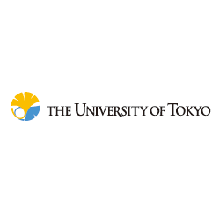DETERMINANTS OF IMPLEMENTING CASH TRANSFER PROGRAM FOR ORPHANS AND VULNERABLE CHILDREN: A CASE OF ISIOLO COUNTY, KENYA
Thomas Mugo Njeru - Master of Public Policy and Administration, Kenyatta University, Kenya
Prof. David Minja - Public Policy and Administration, Kenyatta University, Kenya
ABSTRACT
In 2007, an estimated 145 million children between the ages of 0 and 17 years were orphaned, while in 2014, over 198 million children below the age of 18 years were orphaned in Africa, having lost one or both parents. The number of OVC who include street, forced laborers, sexually exploited children, and those with disabilities is immense and continues to increase drastically. The purpose of this study therefore was to investigate the extent to which government allocated financial resources, management procedures and stakeholders are major determinants of implementation of cash transfer program for orphans and vulnerable children in Isiolo County, Kenya. The study was guided by three objectives to; examine the influence of financial resources in the implementation of Cash Transfer program for Orphans and Vulnerable Children, determine how management influences the implementation of Cash Transfer program for Orphans and Vulnerable Children, examine the influence of stakeholders in the implementation of Cash Transfer program for Orphans and Vulnerable Children in Isiolo county. The above objectives also form the themes in literature review. Financial resources in programs theory was cited to demonstrate that finances are a crucial resource component in programs. Stakeholders’ analysis theory was also be used to show the importance of stakeholders support in the overall implementation of a given program. The research targets head teachers of primary schools where those children attend classes, Assistant chiefs as local administrators with street level bureaucracy, World Vision International and UNICEF unit managers and the caregivers of beneficiaries of CT-OVC program in Isiolo County. The target population was 964 but a population sample of 96 respondents was drawn using stratified random sampling technique. To ensure fair representation, the region was clustered into five regions i.e. central region, northern part, southern part, eastern part and finally western part. Data was collected through self-administered questionnaires; data coded and analyzed using descriptive statistics and results presented in tables and charts. The findings show that that government monthly CT, management procedure, stakeholders involvement explained a great proportion of the changes on cash transfer program for orphans and vulnerable children in Isiolo County. It can be concluded that though the cash transfer programme is a good initiative, the identification of the OVC was not properly done. The study recommended that both the national government and county government should invest heavily in the CT programme for the OVC. The government should increase its funds and also invite other stakeholders like CBOs, churches, businessmen and local leaders so as to scale up the CT OVC programme.









